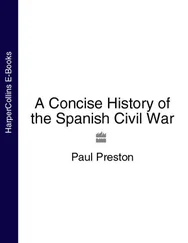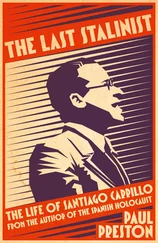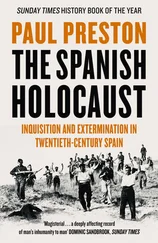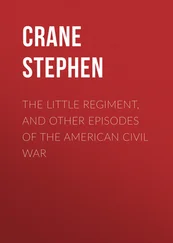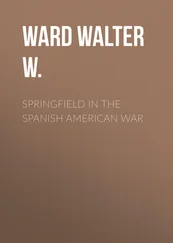The Asturian rising demonstrated to the left that it could carry out change only by legal means. It also demonstrated to the right that its best chance of preventing change lay with the instruments of violence provided by the armed forces. In that sense, it marked the end for the Republic. To Gerald Brenan, the great British writer on Spain who lived in Málaga at the time, it was ‘the first battle of the Civil War’. The conflict did not end with the defeat of the miners. As their leader, Belarmino Tomás, put it, ‘our surrender today is simply a halt on the road, where we make good our mistakes, preparing for the next battle’. There could be no going back. The October revolution had terrified the middle and upper classes; and in their terror they took a revenge which determined the left that they must reunite in order to win power electorally. The Socialist movement was, in fact, badly scarred by the events of October 1934. The repression unleashed in the aftermath of the October rising was truly brutal. In Asturias, prisoners were tortured. Thousands of workers were imprisoned. Virtually the entire UGT executive was in jail. The Socialist press was silenced.
Nothing was done in the next fifteen months to reconcile the hostilities aroused by the revolution and its repression. Despite the CEDA’s much-vaunted aim of beating the revolution by a programme of social reform, proposals for moderate land reform and for tax reforms were defeated by right-wing intransigence. Indeed, Manuel Giménez Fernández, the CEDA Minister of Agriculture, encountered embittered opposition within his own party to his mildly reformist plans. He was denounced as the ‘white Bolshevik’. There was room only for the punishment of the October rebels. Gil Robles demanded the ‘inflexible application of the law’. Companys was sentenced to thirty years imprisonment. The thousands of political prisoners remained in jail. A vicious campaign was waged against Azaña in an unsuccessful attempt to prove him guilty of preparing the Catalan revolution. The Catalan autonomy statute was suspended.
Then, when the CEDA failed to secure the death penalty for two Asturian Socialist leaders, its three ministers resigned. Gil Robles thus resumed his tactic of provoking cabinet crises in order to weaken the Radicals. He hoped to move crab-like towards taking power himself. He was rewarded in early May when Lerroux’s new government contained five Cedistas , including Gil Robles himself as Minister of War. It was a period of open reaction. Landlords halved wages and order was forcibly restored in the countryside. Gil Robles purged the army of loyal Republican officers and appointed known opponents of the regime to high positions – Francisco Franco became Chief of the General Staff, Manuel Goded Inspector General and Joaquin Fanjul Under-Secretary for War. In a number of ways – regimental reorganization, motorization, equipment procurement – Gil Robles continued the reforms of Azaña and effectively prepared the army for its role in the Civil War.
In response to rightist intransigence, the left was also growing in strength, unity and belligerence. In jail, political prisoners were soaking up revolutionary literature. Outside, the economic misery of large numbers of peasants and workers, the savage persecution of the October rebels and the attacks on Manuel Azaña combined to produce an atmosphere of solidarity among all sections of the left. After his release from jail, Azaña, and Indalecio Prieto, who was in exile in Belgium, began a campaign to ensure that the disunity behind the 1933 electoral defeat would not be repeated. Azaña worked hard to reunite the various tiny Republican parties, while Prieto concentrated on countering the revolutionary extremism of the Socialist left under Largo Caballero. A series of gigantic mass meetings in Bilbao, Valencia and Madrid were addressed by Azaña in the second half of 1935. The enthusiasm for left-wing unity shown by the hundreds of thousands who came from all over Spain to attend these discursos en campo abierto (open-air speeches) helped convince Largo Caballero to abandon his opposition to what eventually became the Popular Front. At the same time, the Communists, prompted by Moscow’s desire for alliance with the democracies, frightened of being excluded, also used their influence with Largo Caballero in favour of the Popular Front. They knew that, in order to give it the more proletarian flavour that he wanted, Largo Caballero would insist on their presence. In this way, the Communists found a place in an electoral front which, contrary to rightist propaganda, was not, in Spain, a Comintern creation but the revival of the 1931 Republican–Socialist coalition. The left and centre left closed ranks on the basis of a programme of amnesty for prisoners, of basic social and educational reform and trade union freedom.
When a combination of Gil Robles’ tactic of erosion of successive cabinets and the revelation of two massive scandals involving followers of Lerroux led to the collapse of the Radicals, the CEDA leader assumed that he would be asked to form a government. Alcalá Zamora, however, had no faith in the CEDA leader’s democratic convictions. After all, only some weeks before Gil Robles’ youthful followers of the JAP had starkly revealed the aims of the legalist tactic in terms which called to mind the attitude of Joseph Goebbels to the 1933 elections in Germany: ‘with the weapons of suffrage and democracy, Spain must prepare itself to bury once and for all the rotting corpse of liberalism. The JAP does not believe in parliamentarianism, nor in democracy.’ It is indicative of Alcalá Zamora’s suspicion of Gil Robles that, throughout the subsequent political crisis, he had the Ministry of War surrounded by Civil Guards and the principal garrisons and airports placed under special vigilance. Gil Robles was outraged and, in desperation, he investigated the possibilities of staging a coup d’état . The generals whom he approached, Fanjul, Goded, Varela and Franco, felt that, in the light of the strength of working-class resistance during the Asturian events, the army was not yet ready for a coup.
Elections were announced for February. Unsurprisingly, the election campaign was fought in a frenetic atmosphere. Already, in late October, Gil Robles had requested a complete range of Nazi anti-Marxist propaganda pamphlets and posters, to be used as a model for CEDA publicity material. In practical terms, the right enjoyed an enormous advantage over the left. Rightist electoral finance dramatically exceeded the exiguous funds of the left. Ten thousand posters and fifty million leaflets were printed for the CEDA. They presented the elections in terms of a life-or-death struggle between good and evil, survival and destruction. The Popular Front based its campaign on the threat of fascism, the dangers facing the Republic and the need for an amnesty for the prisoners of October. The elections held on 16 February resulted in a narrow victory for the Popular Front in terms of votes, but a massive triumph in terms of power in the Cortes.
The left had won despite the expenditure of vast sums of money – in terms of the amounts spent on propaganda, a vote for the right cost more than five times one for the left. Moreover, all the traditional devices of electoral chicanery had been used on behalf of the right. Because the election results represented an unequivocal statement of the popular will, they were taken by many on the right as proving the futility of legalism and ‘accidentalism’. The savagery of rightist behaviour during the last two years ensured that the left’s tactical error of 1933 was unlikely to be repeated. The hour of the ‘catastrophists’ had struck. The CEDA’s youth sections and many of the movement’s wealthy backers were immediately convinced of the necessity of securing by violence what was unobtainable by persuasion. The elections marked the culmination of the CEDA attempt to use democracy against itself. This meant that henceforth the right would be more concerned with destroying the Republic than with taking it over. Military plotting began in earnest.
Читать дальше



